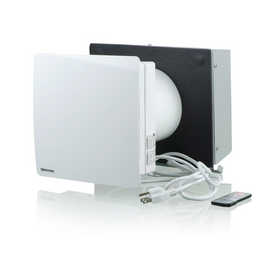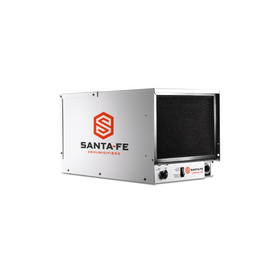- Home

From Classroom to Construction
Project ZeNETH (zero-net-energy tiny home) started with a class at Western Washington University in Bellingham, Washington, that focused on carbon-neutral home design. The instructor tasked students with not only drawing the floor plans of an energy-efficient home but with creating a full energy analysis of net-zero energy homes. Kellen Lynch, an undergraduate from the Fairhaven College of Interdisciplinary Studies and the Institute for Energy Studies at Western Washington University, asked himself, “What if we made this assignment real?”
Fueled in part by “frustrated inspiration,” Kellen launched Project ZeNETH because he wanted to apply his education to housing and energy. He chose a tiny home as the student project, as they spark genuine interest from others. Because of its small size, he felt a tiny home would be feasible as a student project.
After working on the first iteration with a peer in his class, Kellen connected with a new professor at WWU who had just finished a tiny home build at the university level. This professor had been part of the SMUD Tiny House Competition hosted by the Sacramento Municipal Utility District. The stars aligned, and Kellen pursued the project.

Now, two years from its inception, Project ZeNETH is officially in the building phase. At 250 square feet, it is the first tiny home ever to be constructed at WWU. The project has four goals.
One is to research how tiny houses can impact housing security. Another is to design a zero-net-energy tiny house that regards the life-cycle of building materials. The house will represent the environmental values of the Pacific Northwest, and educate the local community by putting theory into practice. Finally, the students want to make sure the project is scalable and provides others with the ability to repeat the design and build process.
Currently, Project ZeNETH is a few weeks into the build process. The students have framed the floor and installed electrical and plumbing. The team is now waiting on a handful of state permits before proceeding with the rest of the build. They anticipate finishing the build by the end of January 2020.
One feature that sets this home apart from many others is the capability to be both on- and off-grid. The home has a 5-kilowatt solar array with Enphase smart micro-inverters, which allow for energy generation even when the grid is down. The team will install a Tesla Powerwall that will run the house, as long as the electrical stays on 120 V.
In addition, the team decided to use Structural Insulated Panels (SIPs) for the walls. SIPs are a cost-effective and energy-efficient building material that has become increasingly popular in new construction. The German-engineered Innotech windows are high-performance and energy-efficient.
Kellen and the rest of the project team worked with the university to find the perfect on-campus location for the tiny home: a parcel of lawn slightly larger than the home located at the campus entrance. The house will include a kitchen and bathroom. However, because it’s currently on campus, the tiny home will only have electrical hookups. An on-site storage tank will supply water.

A Multiuse Tiny Home
Still, the location will allow students, professors, and campus visitors to interact with and learn about tiny home design and construction. Since the Institute for Energy Studies at WWU owns the tiny home, the ZeNETH is a valuable teaching tool for students in all disciplines. While on campus, the ZeNETH could house social events, meetings, a student gallery space, a podcast recording studio, and a food pantry, Kellen says.

Meanwhile, the team is excited to track the ZeNETH’s energy data using Egauge. The energy modeling tool will be installed in the home’s electrical panel to monitor energy consumption. Data will be displayed in the house and online: The team hopes computer science and electrical engineering students will get involved with this phase, thus furthering the interdisciplinary goals of the home.
Although no one will be living in the home, which may slightly skew the data, the energy data is a powerful learning tool in helping students and others understand energy consumption in a home of this size.
As with any project, Project ZeNETH has already challenged and rewarded the students. Kellen said, for example, that getting fellow students to commit the time required was difficult, but that those who committed flourished. A few of the students have even pursued career paths related to the project.
Finding a site for the tiny home was a challenge for the students. For the first time in the university’s history, students asked to collaborate on a project of this magnitude. With persistence, the students found the perfect spot. Kellen hopes their project will encourage the university to work with students on similar projects in the future.
Tiny Home, Big Impact
Kellen has considered the project’s ripple effect. He recognizes ZeNETH may not be the perfect house, but it will feature inspiring components. He hopes homeowners who visit ZeNETH will be moved to incorporate SIPs, efficient windows, a composting toilet, a solar array, micro-inverters, and low-toxic building materials into their own homes.
A significant focus of Project ZeNETH has been open-source resource sharing. Kellen recognizes that students and other people around the globe are working on similar projects. Just as Kellen and his team learned about housing and energy during the work, he hopes others who follow the project will learn from the team’s experiences, as well.
Another of the project’s goals is for the students to use the knowledge and skills they’ve acquired as part of their education. In doing so, Kellen hopes they’ll be inspired to work on issues like housing and energy after graduation.

Kellen and his team have been working with the local planning department and the university to find solutions and enact change. He hopes Project ZeNETH will become a case study that informs municipalities and other policymakers on how to inform future policies to include tiny homes.
Kellen wants their story to be an inspiration for others. Kellen and his team have been working with the local planning department and the university to find solutions and enact change. He hopes Project ZeNETH will become a case study that informs municipalities, policymakers, and future policies on tiny home design and construction.
Moreover, he wants Project ZeNETH to inspire other instructors and students. Tiny home projects are feasible for a lot of schools at different levels. Instead of completing assignments that may never be thought of again, students can work on an exciting and memorable project that not only harnesses their education but is a gift to their community.
Maria Saxton
Located in Roanoke, Virginia, Maria Saxton holds a Ph.D. in Environmental Design and Planning from Virginia Tech. She works as an Environmental Planner and Housing Researcher for a local firm specializing in Community Planning, Architecture, Landscape Architecture, and Historic Preservation. Her dissertation explored the environmental impacts of small-scale homes. She serves as a volunteer board member for the Tiny Home Industry Association.











